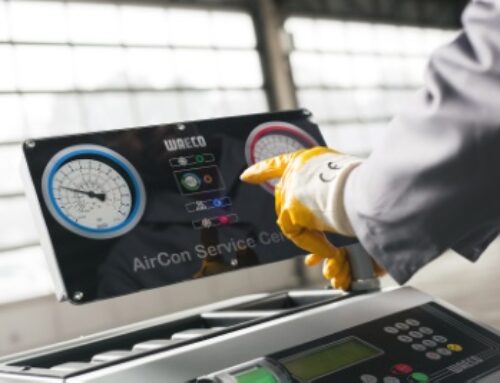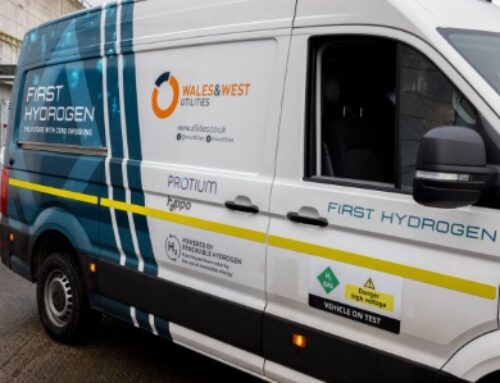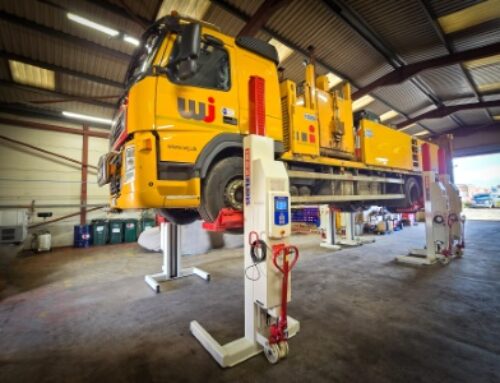Creating a connected logistical network
 Tom Blackie, head of automotive at RealVNC, says commercial fleets are increasingly embracing technologies pioneered in the IT industry to navigate the challenges ahead
Tom Blackie, head of automotive at RealVNC, says commercial fleets are increasingly embracing technologies pioneered in the IT industry to navigate the challenges ahead
A number of recent trends in Britain are creating an imperative for ‘connected’ commercial vehicles that use technology pioneered in the IT industry to give fleet managers unprecedented remote access and control over fleets on the move.
The possibility of new customs checks for lorries at all ports, as Britain departs the European Union, could create new challenges for the speed and efficiency of our road freight supply chains, while the UK already has the most congested cities in the EU.
At the same time, UK hauliers are being required to move more goods across greater distances than ever before, with HGVs carrying 12 per cent more goods across the roads and travelling nine per cent further than before, and British van drivers covering 47.7 billion miles in 2015 alone.
And UK HGV fleets are getting older: in 2006-15 the proportion of lorries on the road aged ten or more years rose from 23 per cent to 29 per cent.
This growth and increase in demand means that freight supply chains are simultaneously under pressure to increase uptime and meet tougher delivery times to keep up with an expected 44.9 per cent growth in online retail spending across the UK in the next five years.
UK commercial passenger fleets are also under pressure to find new ways to cut journey times to maintain a competitive advantage over cheaper market entrants.
This comes at a time when commercial transport operators will have to dramatically boost fuel efficiency, with the UK transport sector accounting for the second highest output of CO2 emissions in the UK, and the Climate Change Act requiring an 80 per cent reduction in greenhouse gas emissions by 2050.
Fuel accounts for an estimated 30 per cent of an HGV operator’s cost, creating a major financial imperative for change, too.
Fleet managers will also have to contend with a growing UK safety crackdown, due to many HGVs being found to be unroadworthy and drivers illegally working excessive hours. Police are increasing efforts to target unsafe lorries, and Transport for London recently took 95 dangerous vehicles off the road in one  month alone.
month alone.
The current climate is creating new reasons for commercial vehicle operators to improve uptime, reduce journey times, increase fuel and cost efficiency by adopting the same IT systems that multinational companies use to track and improve the productivity of remote IT systems and workers.
This involves moving beyond basic telematics monitoring to the use of remote access and cloud computing to link drivers up with everything from service stations to police forces and give them remote support in real-time on the road – just as IT helpdesks can ‘remote in’ to offsite workers’ laptops.
This technology is being applied across many different applications. One forestry vehicle manufacturer uses it to increase uptime and efficiency while deploying expensive machines to isolated locations without service infrastructure.
This innovative manufacturer has integrated a web-based platform into its forest harvesting machines that allows senior technicians from the manufacturer or service provider to ‘remote in’ to the machines and fix system faults, calibrate equipment or remotely identify and diagnose problems from anywhere in the world.
The technology gives expert technicians access to the vehicles from a PC in a support centre, or a mobile phone or tablet in the field, saving time and money on unplanned maintenance activities and increasing fleet utilisation.
In another example, a pioneering London taxi firm is creating ‘connected cabs’ that reduce customer journey times by enabling drivers to connect car and smartphone to get real-time traffic or weather updates through the dashboard.
Using the same technology, they also feedback real-time telematics information about the taxi fleet to a service centre to monitor the performance, fuel usage and status of the vehicles in order to maximise fleet uptime and fuel efficiency.
 Haulier fleets will soon be able to crowdsource an array of expertise on the road, from highways agencies and police forces to repair centres and IT helpdesks to proactively predict and avoid everything from congestion hotspots to weather hazards.
Haulier fleets will soon be able to crowdsource an array of expertise on the road, from highways agencies and police forces to repair centres and IT helpdesks to proactively predict and avoid everything from congestion hotspots to weather hazards.
We could even see an all-inclusive fleet management service that draws on real-time data feeds, on everything from the fuel load to location of fleets, in order to constantly rearrange vehicle movements around potential problems.
This will create responsive, adaptable supply chains that harvest the data in each vehicle to transform fleet behaviour in line with everything from cost to carbon targets. Crucially, the data will be mined to identify driver behaviours that contribute to fuel waste or late deliveries, helping to drive environmental and business as well as safety benefits.
In future, successful commercial operators will be those that harness real-time data from their mobile driver workforce to continuously optimise fleet movements, remotely fix problems and connect drivers to a broader data ecosystem.
The ultimate goal is to bring the whole road transport system, from highways agencies to drivers, repair services and customs systems into one integrated logistical network, creating hyper-efficient ‘smart’ commercial fleets.











